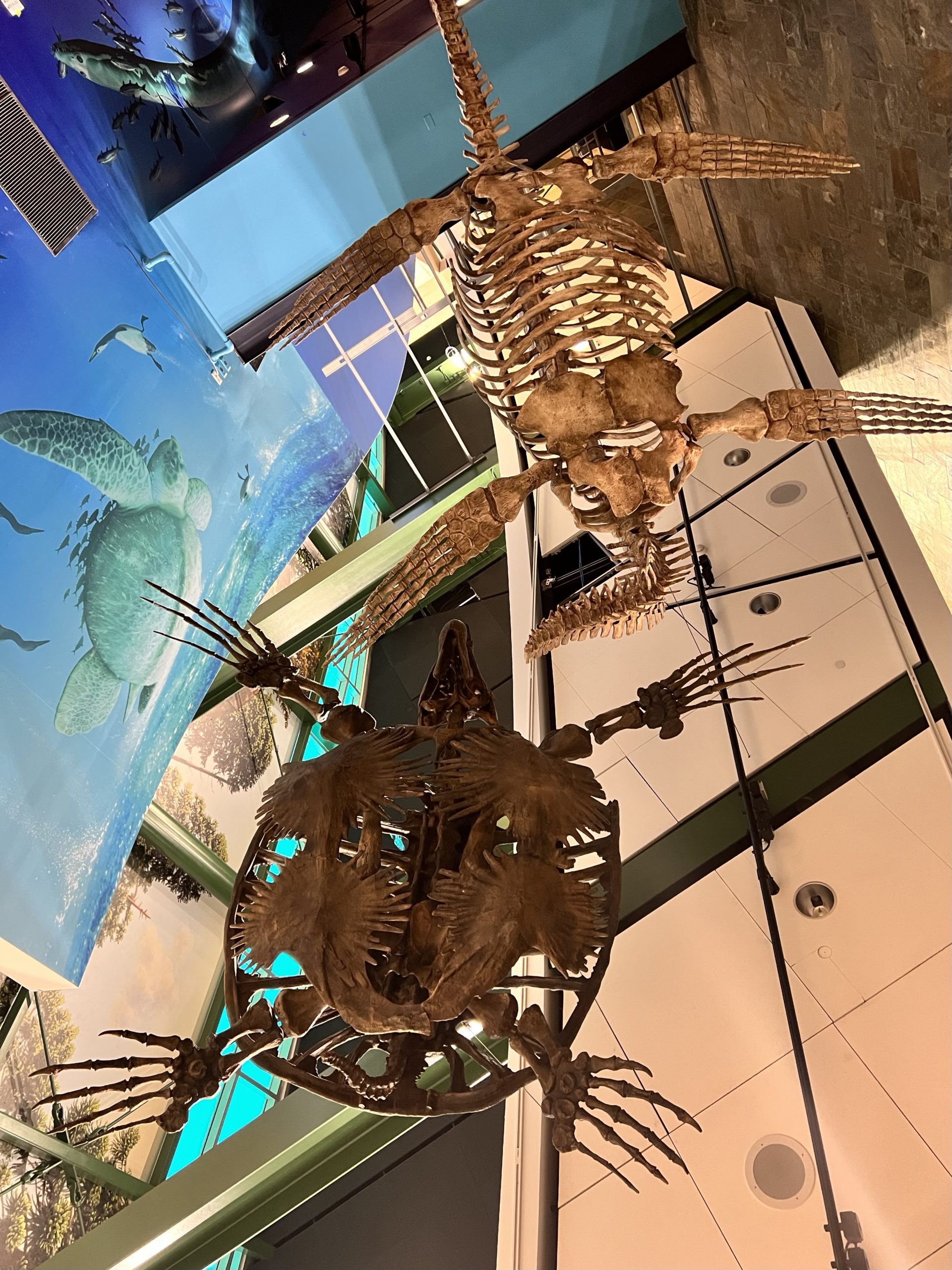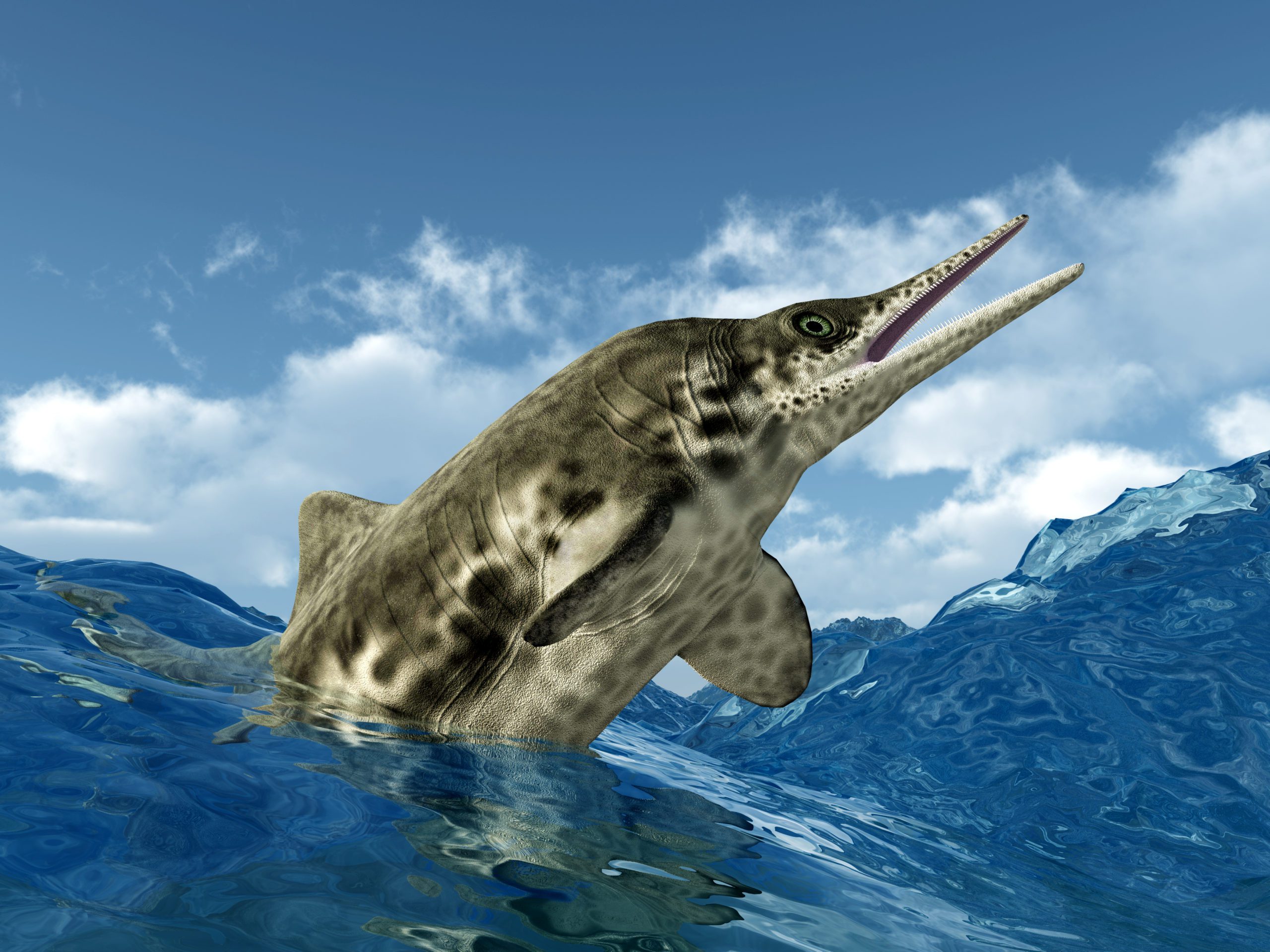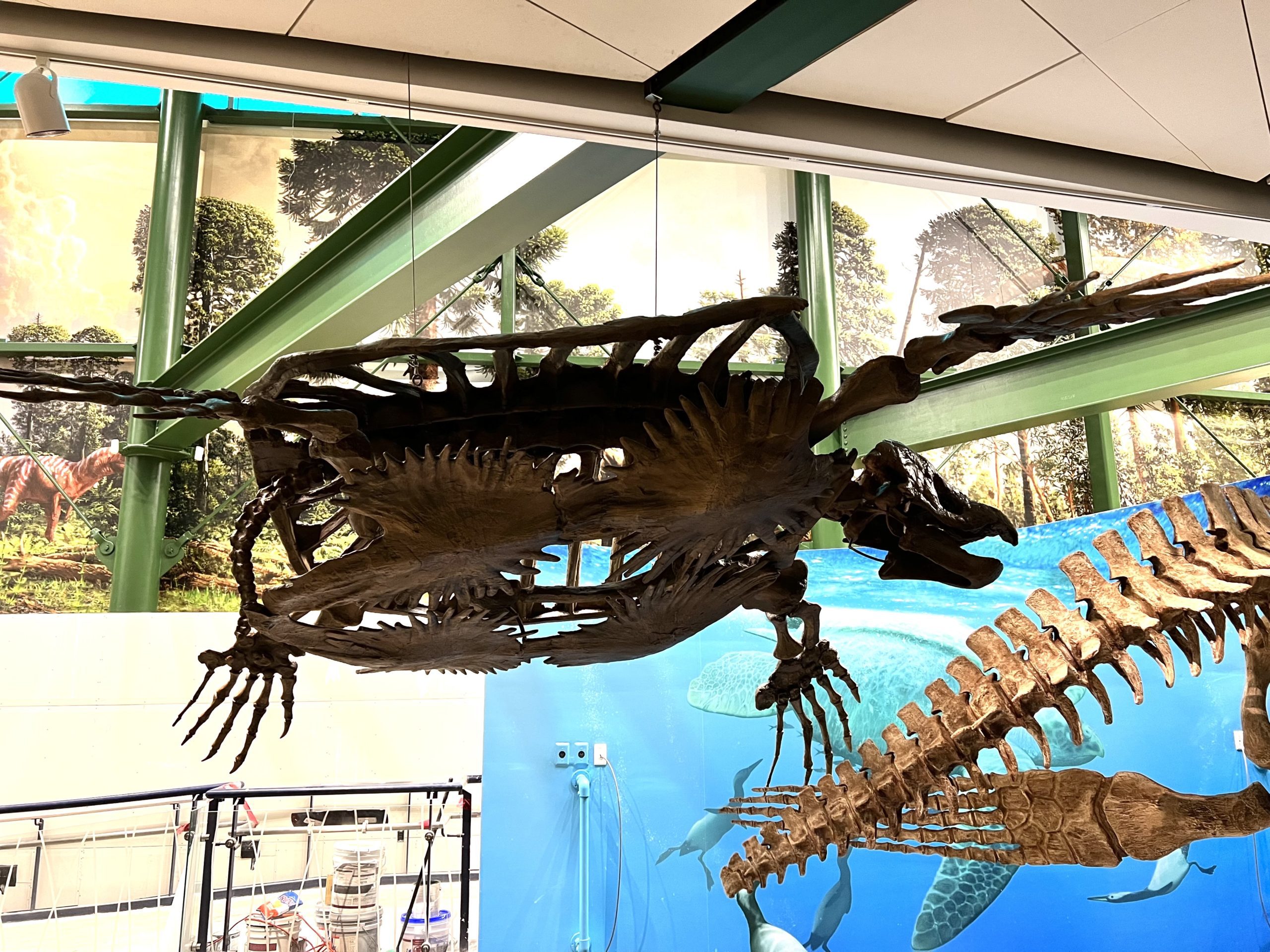Dive deep into ancient waters with Monsters of the Mesozoic Seas, and explore a treasure trove of aquatic animals in the new Dinosphere at The Children’s Museum in March 2022. Pointing out different body shapes and creature features can help children understand how the animals hunted, ate and lived underwater.
For example, ask your child to imagine what it would be like to confront an underwater beast with sharp, pointy teeth and a 23-foot-long neck. Some might think it looks like the Loch Ness monster. The real creature is called an Elasmosaurus. Explain how it probably moved through the water by using paddle-like flippers, just like oars are used to move a canoe. Scientists think it could sneak up on prey by hiding low in the water and using its long neck to sweep and strike out at its meal before the prey ever saw it coming. Its pointy, fang-like teeth tell us that they probably snatched up their prey and swallowed it whole, and likely only hunted animals that were small enough to fit in their mouths.
With each step farther into the new exhibit, special lighting effects, combined with sounds of shifting water and bubbling and gurgling of animal life, help little imaginations run wild as if they are swimming in a real sea. Imagine the look on their faces when they see a huge, 11.5-foot Archelon (turtle) and a giant ammonite.
But look out! You can’t hide from the Baptanodon. This 20-foot-long, dolphin-like body would have sliced through the water with front flippers for steering and a tail propelling it (another lesson in motion). This creature didn’t have teeth, which means it probably slurped up soft-bodied prey like squid. But what really set it apart was its freakishly large eye sockets that were the size of dinner plates. The Sundance Sea, where this creature once lived, wasn’t deep enough to get very dark, so its enormous eyes were likely most useful for hunting at night.
The Plioplatercarpus, a type of mosasaur, was one of the top predators in the ocean. They ate just about anything they could catch, including other mosasaurs. They used double-hinged jaws and flexible skulls to open their mouths wide. They were powerful swimmers that had a body similar to modern lizards but were much larger (14 feet long).
Children tend to be fascinated by these marine reptiles and dinosaurs because they seem powerful, but there is no need to be afraid because they are extinct and cannot hurt them. It is a great opportunity to explain how sea creatures evolved and adapted to the environment.
It all comes together in an activity in which families create their own sea creature by selecting and combining an assortment of body parts. Use the touchscreen to place the new creation in the ocean, where it will try to survive while searching for food and dealing with predators. Families can then test their creature’s special features in more than one type of sea environment to see how adaptations can be an advantage to one environment over another. It is a sneaky way to learn while having fun.








